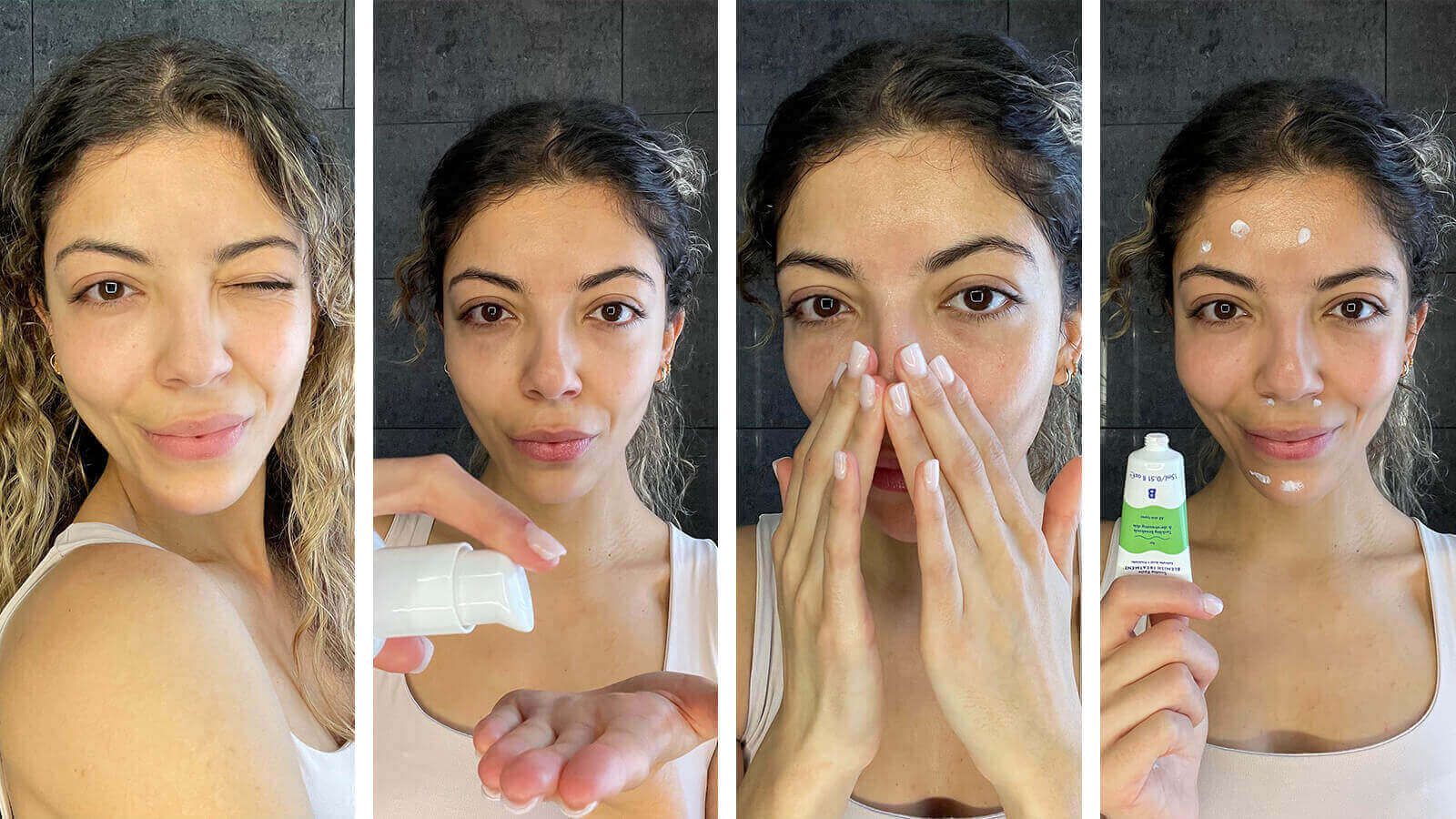
Skincare isn’t just a daily chore; it’s a ritual that promotes the health and vitality of your skin. In this comprehensive article, we delve into the intricacies of a well-rounded skincare routine, focusing on the vital roles of serums, exfoliation, and sun protection. Understanding the science and art behind these elements is key to achieving and maintaining healthy, radiant skin.
The Foundations of a Skincare Routine
Before we explore the specifics of serums, exfoliation, and sun protection, it’s crucial to understand the foundational principles of a skincare routine.
Cleansing: The First Step to Clean Canvas
Cleansing is the initial step in any skincare routine. It removes impurities, makeup, and excess oils from the skin’s surface. A well-chosen cleanser should effectively cleanse without stripping the skin of its natural oils, maintaining its moisture balance.
Moisturizing: Hydration and Barrier Protection
Moisturizers play a vital role in maintaining skin hydration. They help lock in moisture, strengthen the skin’s natural barrier, and prevent water loss. Depending on your skin type, you may opt for a light, gel-based moisturizer or a richer, cream-based one.
Cleansing & Moisturizing: The Basics of a Routine
Cleansing and moisturizing create the foundation of a skincare routine. They’re essential for all skin types and lay the groundwork for advanced skincare steps.
Skin Type Matters
Before diving into serums, exfoliation, and sun protection, it’s vital to understand your skin type. Different skin types have unique needs, and your routine should be tailored to address these specifics:
- Oily Skin: Prone to excess sebum production, which can lead to clogged pores and breakouts.
- Dry Skin: Lacks moisture, often feeling tight and prone to flakiness.
- Combination Skin: A mix of both oily and dry areas.
- Sensitive Skin: Easily irritated and prone to redness and reactions.
- Normal Skin: Balanced and not too oily or too dry.
Knowing your skin type is crucial for selecting appropriate products and addressing your skin’s unique requirements.
The Role of Serums in Skincare
Serums are concentrated skincare products designed to target specific skin concerns. They are formulated with a higher concentration of active ingredients, making them potent solutions for various skin issues. Serums come in a variety of types, each catering to specific concerns.
Hydrating Serums
Hydrating serums are designed to boost the skin’s moisture levels. They typically contain ingredients like hyaluronic acid, which can hold up to 1000 times its weight in water, and glycerin. These serums are excellent for all skin types, especially those struggling with dryness and dehydration.
Anti-Aging Serums
Anti-ageing serums aim to reduce the appearance of fine lines and wrinkles. They often contain ingredients like retinol (a form of vitamin A), vitamin C, and peptides. These ingredients can stimulate collagen production and even out skin tone.
Brightening Serums
Brightening serums target pigmentation, dark spots, and uneven skin tone. They may contain ingredients like vitamin C, niacinamide, or liquorice root extract. These serums work to brighten the complexion and reduce the appearance of sunspots.
Acne-Fighting Serums
For those dealing with acne or blemishes, acne-fighting serums can be a game-changer. They often contain salicylic acid, benzoyl peroxide, or alpha hydroxy acids (AHAs). These ingredients help unclog pores, reduce inflammation, and prevent breakouts.
Antioxidant Serums
Antioxidant serums help protect the skin from free radical damage, which can lead to premature ageing. Ingredients like vitamin C, vitamin E, and ferulic acid are commonly found in these serums. They also work well in conjunction with sunscreen.
Soothing and Calming Serums
For sensitive skin types or those prone to redness and irritation, soothing and calming serums can be incredibly beneficial. Ingredients like chamomile, aloe vera, and green tea extract help reduce redness and promote a soothing effect.
Applying Serums
Serums should be applied after cleansing and toning, but before moisturizing. The reason for this order is simple: serums are lightweight and quickly absorbed. Applying them before a thicker moisturizer ensures that the active ingredients penetrate the skin effectively.
A few drops of serum are usually sufficient. Gently pat the serum onto your skin, starting with your forehead and working your way down to your neck and décolletage.
Exfoliation: The Key to Smooth Skin
Exfoliation is a crucial step in any skincare routine. It involves the removal of dead skin cells from the surface of the skin, promoting a brighter, smoother complexion. There are two primary methods of exfoliation: physical exfoliation and chemical exfoliation.
Physical Exfoliation
Physical exfoliation involves the use of abrasive substances, such as sugar, salt, or microbeads, to physically scrub away dead skin cells. While it can provide instant gratification in terms of smoothness, it’s important to use gentle, non-abrasive exfoliants to avoid damaging the skin.
Facial scrubs and cleansing brushes are common tools for physical exfoliation. However, they should be used with care to avoid over-exfoliation, which can lead to irritation and sensitivity.
Chemical Exfoliation
Chemical exfoliation, on the other hand, uses acids or enzymes to dissolve dead skin cells. It’s typically considered a more effective and gentle method. There are two main types of chemical exfoliants:
Alpha Hydroxy Acids (AHAs)
AHAs, such as glycolic acid and lactic acid, work on the skin’s surface to remove dead cells. They can improve skin texture, reduce the appearance of fine lines, and enhance overall radiance.
Beta Hydroxy Acids (BHAs)
BHAs, like salicylic acid, penetrate deeper into the pores, making them effective for unclogging and reducing acne. They also have anti-inflammatory properties.
The Importance of Regular Exfoliation
Regular exfoliation has multiple benefits:
- Improved Texture: Exfoliation smooths the skin’s surface, leaving it soft and glowing.
- Unclogged Pores: It helps prevent clogged pores, which can lead to acne and blackheads.
- Enhanced Product Absorption: Exfoliating allows serums and moisturizers to penetrate more effectively.
- Even Skin Tone: Exfoliation can reduce the appearance of pigmentation and dark spots.
- Stimulation of Collagen Production: It can promote collagen production for firmer, more youthful skin.
Frequency of Exfoliation
How often you should exfoliate depends on your skin type and the products you’re using. Generally, it’s recommended to exfoliate 1-3 times a week. However, those with sensitive or dry skin may find that once a week is sufficient, while those with oily or acne-prone skin may benefit from more frequent exfoliation.
Sun Protection: The Ultimate Anti-Aging Tool
While many people prioritise skincare to address existing issues, the most potent weapon against skin ageing is preventive: sunscreen. Sun protection is not just for sunny days; it should be a daily habit, rain or shine.
UV Radiation and Its Effects
The sun emits harmful ultraviolet (UV) radiation, which comes in two primary forms: UVA and UVB.
- UVA: These rays penetrate the skin more deeply and contribute to premature ageing. They can cause fine lines, wrinkles, and sunspots.
- UVB: These rays are responsible for sunburn. They affect the skin’s top layers and can lead to skin cancer over time.
The Role of Sunscreen
Sunscreen is designed to protect the skin from the harmful effects of UV radiation. It acts as a barrier, shielding the skin from the sun’s damaging rays. The regular use of sunscreen is the single most effective way to prevent premature ageing and reduce the risk of skin cancer.
Choosing the Right Sunscreen
Selecting the right sunscreen is essential. Here are some key considerations:
- Broad-Spectrum: Ensure that the sunscreen provides broad-spectrum protection, guarding against both UVA and UVB rays.
- SPF: Look for a sun protection factor (SPF) of at least 30 for daily use. If you’re planning prolonged sun exposure, use SPF 50 or higher.
- Water-Resistant: Water-resistant sunscreen is ideal for swimming or activities that cause sweating.
- Skin Type: Choose a sunscreen appropriate for your skin type. Those with oily skin may prefer oil-free formulas, while those with dry skin may opt for moisturizing options.
Application and Reapplication
For adequate sun protection, apply sunscreen to all exposed skin areas, even on cloudy days. Don’t forget often-overlooked areas like the ears, neck, and the back of your hands. It should be applied generously to form a protective barrier.
Reapplication is crucial, especially if you’re spending time outdoors. Sunscreen should be reapplied every 2 hours, or more frequently if you’re swimming or sweating.
Sun Protection as an Anti-Aging Tool
Sunscreen is the ultimate anti-ageing tool. It helps prevent the breakdown of collagen, reduces the risk of skin cancer, and keeps your skin looking youthful. It’s an essential component of any skincare routine, regardless of your age or skin type.
Building Your Perfect Skincare Routine
Now that we’ve explored the roles of serums, exfoliation, and sun protection, it’s time to consider how these elements fit into a personalised skincare routine. The order of application is crucial to ensure that products work effectively without interfering with each other.
Morning Routine
- Cleanser: Begin with a gentle cleanser to remove any impurities or oils that may have accumulated overnight.
- Serum: Apply your chosen serum, focusing on specific skin concerns.
- Moisturizer: Follow up with a moisturizer to lock in hydration.
- Sunscreen: Finish your morning routine with sunscreen, applied generously.
Evening Routine
- Cleanser: Start with another round of cleansing to remove makeup, sunscreen, and impurities.
- Exfoliation: If you exfoliate, do so after cleansing, and follow product-specific instructions.
- Serum: Apply any serums as in your morning routine, tailored to your skin concerns.
- Moisturizer: Seal the benefits of your serums with a nourishing moisturizer.
Conclusion: Nurturing Healthy Skin
A well-rounded skincare routine is more than just a series of products; it’s a commitment to the long-term health and radiance of your skin. The use of serums, exfoliation, and sun protection are essential elements of this routine, each playing a unique role.
Serums provide targeted solutions for specific skin concerns, exfoliation removes dead skin cells for a brighter complexion, and sun protection is the ultimate anti-ageing tool. Understanding your skin type, choosing the right products, and adhering to a consistent routine is key to achieving and maintaining healthy, glowing skin.
The world of skincare is vast and continually evolving. As you embark on your skincare journey, remember that it’s not about perfection, but progress. Be patient and allow your skin the time it needs to adapt and thrive. In the end, the radiant, healthy skin you’ve always dreamed of is well within your reach.



